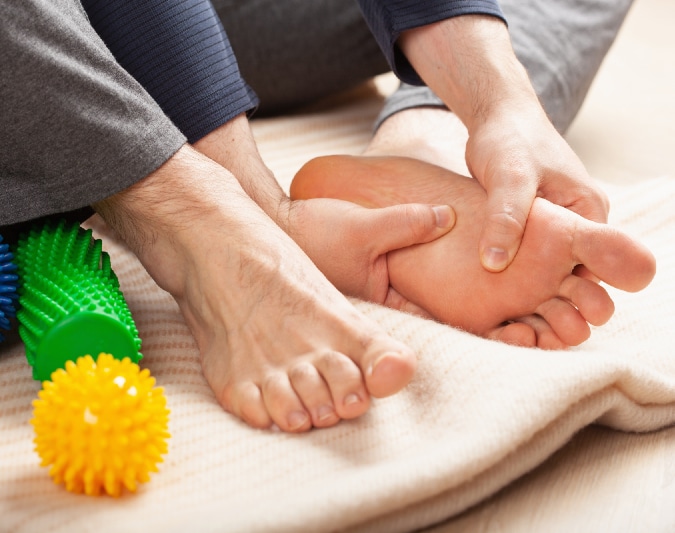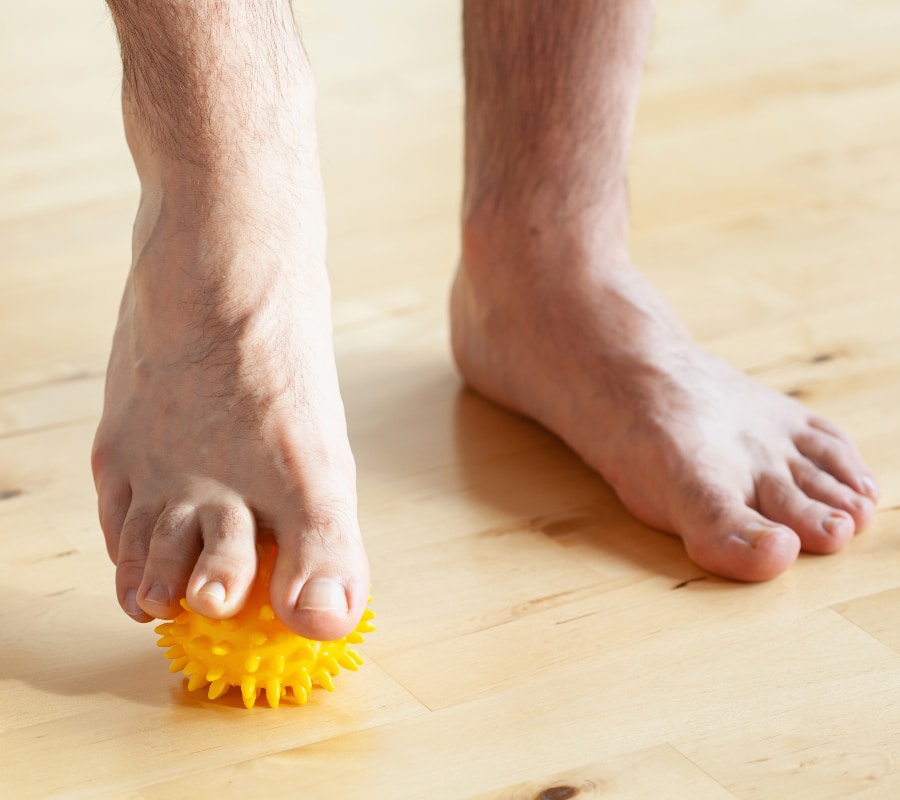Morton’s Neuroma
Do you constantly get the sense that you’re standing on a small object, right in the ball of your foot—even though you check your shoes and find nothing there?
If so, you may be suffering from a Morton’s neuroma.
Some people describe the feeling like stepping on a marble or pebble. For others, it’s more like a fold in a sock. Either way, a neuroma can be irritating, distracting, and can keep you from doing the things you love.
But it doesn’t have to be that way for much longer. Dr. Melhuish and the team at Sierra Foot & Ankle offer several effective treatment options that can help you manage or eliminate your neuroma pain and go back to living life on your terms.
What Exactly Is a Morton’s Neuroma?
A Morton’s neuroma is a small mass of thickened tissue in or around one of the nerves in the ball of your foot. The most common location for this to occur is in the area between your third and fourth toes, or less frequently between the second and third toes.
The neuroma itself is not painful. However, when you bear weight on the foot, the mass of tissue may press against the nearby nerve. Often this leads to pain after only a very short time of walking or standing. Other common symptoms include:
A numb feeling in the ball of your foot near your toes
Tingling in your forefoot and toes
A thick or swollen feeling between or under the base of the toes
Shooting pains in toes or the ball of the foot when pressure is placed on them
Unfortunately, without treatment the symptoms of Morton’s neuroma tend to worsen and gradually affect a larger region of the foot over time.
What Causes Morton’s Neuroma?
Morton’s neuromas are sometimes described as “nerve tumors,” but fortunately they are not cancerous.
In most cases, the primary cause is prolonged pressure or irritation on the nerve. Common risk factors include:
- Wearing shoes that irritate the nerve. High heels put extra pressure on the front portion of the foot, while shoes with tight or pointed toe boxes can pinch toes together so that bones rub against the nerve.
- Existing structural foot problems. Some people are simply born with foot structures that naturally put more pressure on the front part of the foot, which makes them more prone to developing neuromas. Those who already have a foot deformity like a bunion or hammertoe are also at higher risk.
- Active occupations or hobbies. Jobs or activities that keep you on your feet all day can increase your risk of many foot problems, including neuromas.
How Is Morton’s Neuroma Treated?
If you’re dealing with ball of foot pain that you suspect might be a neuroma, the first thing you should do is call our office and have us check it out.
The symptoms of this condition can be very similar to many other problems, including metatarsal stress fractures, pinched nerves, tendon damage, and other problems, so you definitely want a professional to confirm a diagnosis and make sure the correct treatment protocols are followed.
Once we know for sure the cause of your pain is really a neuroma, we will recommend a customized treatment plan based on your needs. Possible approaches include:
- Home-based treatments. Sometimes the pain of a mild neuroma can be mitigated by lifestyle modifications and home care. We may recommend things like switching to roomier shoes, stretching and massaging your feet, or taking over-the-counter medications.
- Orthotics. The right pair of arch supports or custom orthotics can help off-load excess pressure on the nerve and divert it away from the neuroma, alleviating the discomfort.
- Alcohol injections. This is a highly effective, minimally invasive alternative to surgery that offers much better results than a standard cortisone injection. A solution that contains a mixture of alcohol and long-acting anesthetics is injected into the area with the neuroma, using our on-site ultrasound to pinpoint the precise location. A typical treatment course includes about four sessions, and studies have found this approach to provide total pain relief for an extended period of time in more than 4 out of 5 patients.
- If less invasive treatments are ineffective, surgery is always available as a final option. This may involve releasing structures putting pressure on the nerve, or simply removing the nerve entirely.
No matter how long you’ve had your neuroma or how severe your discomfort is, please give our office a call. We will be glad to help you. There is no reason to wait until the pain becomes unmanageable!
You can reach our office in Carson City at (775) 783-8037, or by using the contact form at the bottom of this page.
Get In Touch
Address
2350 South Carson St
Suite 3
Carson City, NV 89701
Contact
Call: (775) 783-8037
Fax: (775) 782-3787
OPT-IN To Text:
By texting our office at
(775) 783-8037 from your mobile phone, you are consenting to receive SMS text messages from our staff. Reply STOP to unsubscribe.
*Read our Privacy Policy & Terms and Conditions.
Social




© Sierra Foot & Ankle. All Rights Reserved. Privacy Policy.
Web Design by CP Solutions. Marketed by VMD Services.


